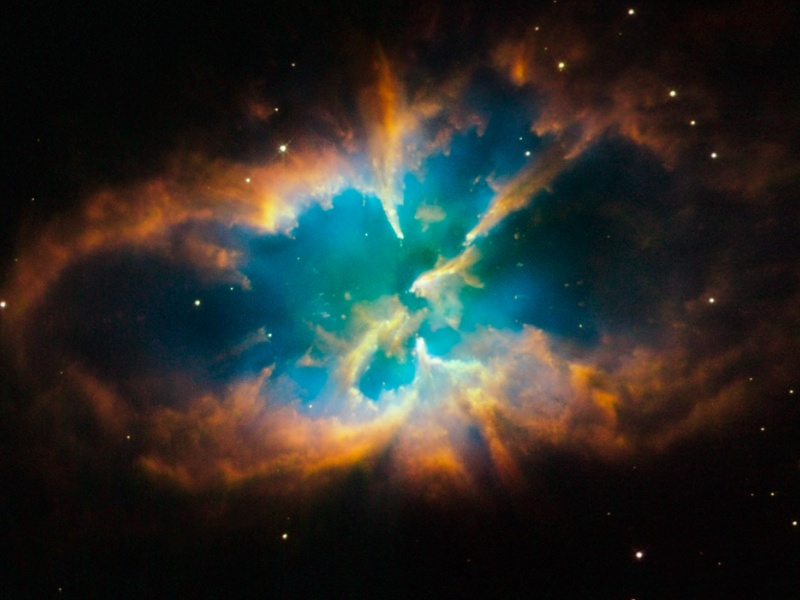
|
Explanation: NGC 2818 is a beautiful planetary nebula, the gaseous shroud of a dying sun-like star. It could well offer a glimpse of the future that awaits our own Sun after spending another 5 billion years or so steadily using up hydrogen at its core, and then finally helium, as fuel for nuclear fusion. Curiously, NGC 2818 seems to lie within a sparse open star cluster, NGC 2818A, that is some 10,000 light-years distant toward the southern constellation Pyxis (Compass). Since open star clusters disperse after only a few hundred million years, this one must be exceptionally old to have one of its member stars evolve to the planetary nebula stage. At the distance of the star cluster, planetary nebula NGC 2818 would be about 4 light-years across. The Hubble image is a composite of exposures through narrow-band filters, presenting emission from nitrogen, hydrogen, and oxygen atoms in the nebula as red, green, and blue hues.
|
January February March April May June July August September October November December |
| ||||||||||||||||||||||||||||||||||||||||||||||||
NASA Web Site Statements, Warnings, and Disclaimers
NASA Official: Jay Norris. Specific rights apply.
A service of: LHEA at NASA / GSFC
& Michigan Tech. U.
Based on Astronomy Picture
Of the Day
Publications with keywords: planetary nebula - open cluster
Publications with words: planetary nebula - open cluster
See also:
- APOD: 2025 April 15 Á Planetary Nebula NGC 1514 from Webb
- Planetary Nebula Abell 7
- Open Star Clusters M35 and NGC 2158
- APOD: 2025 February 25 Á M41: The Little Beehive Star Cluster
- APOD: 2025 February 11 Á The Spider and the Fly
- The Medusa Nebula
- APOD: 2024 October 29 Á NGC 602: Stars Versus Pillars from Webb
